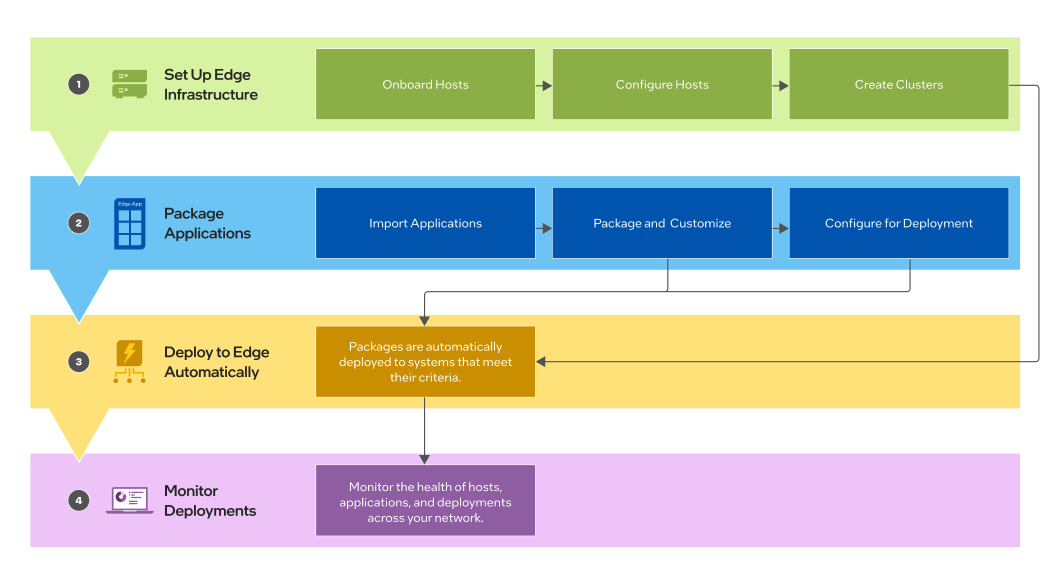How it Works#
Key features of Edge Orchestrator include:
Infrastructure management for lifecycle management of hosts, at scale.
Create a custom hierarchical data model that matches your organization’s needs and manages hosts with policy-based management.
Securely onboard and provision hosts remotely with cloud-based onboarding.
Cluster orchestration to Manage, monitor, and operate Kubernetes clusters across hosts.
Simplify cluster lifecycle management at all stages of operation.
Streamline and standardize downstream cluster creation with Kubernetes templates.
Application orchestration to easily package, deploy, and monitor cloud-native applications across distributed edge networks.
Simplify deployment of complex solutions with flexible packaging, profiles, and custom deploy-time environments.
Deploy, run, and manage container and virtual machine workloads side by side.
Deploy software automatically based on metadata, or to a list of known targets.
Observability to gain visibility and insight at every level, from the workload to the cluster.
Health monitoring and alerting help you quickly identify and repair issues.
At a high level, you can use the following steps to use Edge Orchestrator.
1. Set up Edge Infrastructure: Leverage Edge Orchestrator’s fleet management and cluster orchestration capabilities to onboard and configure hosts and form them into clusters.
2. Package and Deploy Applications: Use Edge Orchestrator’s application orchestration features to import and package applications. Create profiles to customize deploy-time environments. Configure conditions for automated deployment.
3. Deploy to Edge Automatically: Packages are deployed to clusters based on metadata, or to lists of custom targets. Edge Orchestrator automatically distributes software updates and deploys the latest packages to new hosts as they onboard.
4. Dashboard and Alerts: Observability features are woven throughout Edge Orchestrator. Performance monitoring and alerting highlight critical issues, while the unified dashboard offers visibility across the entire edge stack.
For more details, see:
